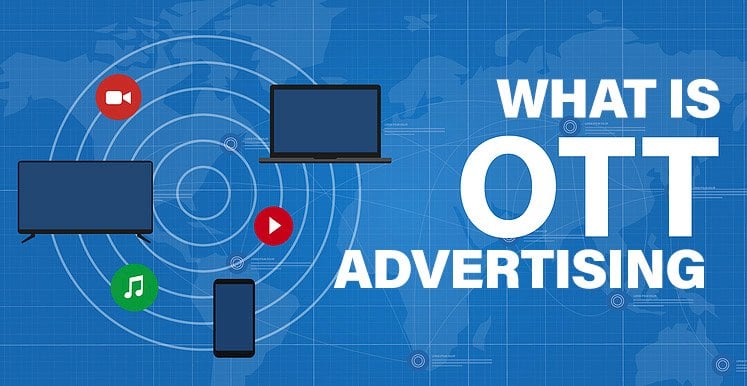The rise of Over-the-Top (OTT) platforms and streaming services changes a lot of how people watch content. With fewer people watching traditional TV now, more and more want to use online streaming instead. This change has created new chances for advertising technology, known as AdTech, to come up with new ideas and fit into the digital world. Let’s look at how AdTech is changing ads in the OTT and streaming services area.
Understanding AdTech in OTT and Streaming Services
OTT platforms provide video content right to viewers using the internet, instead of going through regular cable or satellite TV. Well-known examples are Netflix, Hulu, Amazon Prime Video, and Disney+. Streaming services can be subscription-based (SVOD), ad-supported (AVOD), or a hybrid of both.
The Evolution of Advertising
Traditional advertising, mostly using TV ads, billboards, and print media, is now less effective because people are moving to digital platforms. AdTech for OTT and streaming services shows a big change in the ad industry by using new technologies to give more targeted, trackable, and interesting advertisements.
The Power of Data and Personalization
One important benefit of AdTech in the OTT and streaming world is how it can gather and study huge amounts of user information. Streaming services collect data about what people watch, what they like, and who they are. This information helps make ads very personal for each viewer.
For example, if a person watches many cooking shows, they may see more ads for kitchen tools or food delivery. This type of personalization makes the ads more relevant and interesting to viewers. Because of this, people are more likely to notice these ads and interact with them.
Programmatic Advertising
Programmatic advertising is also a very important part of AdTech for OTT and streaming services. This automatic method uses special algorithms and real-time bidding to buy ad space, making sure that ads reach the right people at the best moment.
Programmatic advertising offers several benefits:
- Efficiency: Automates the ad buying process, reducing the need for human intervention.
- Targeting: Uses information to aim at particular groups of people based on different factors like age, where they live, and what they are interested in.
- Real-Time: Changes ad placements right away based on how well they are doing, making campaigns work better.
Interactive and Shoppable Ads
AdTech also changes how people see ads. Interactive ads let viewers connect with content directly, like clicking on a product to know more, taking part in a survey, or watching extra video. Shoppable ads go even further, letting viewers buy products directly from the ad itself without needing to leave the streaming service.
For example, during a fashion show on TV, people watching might see ads they can click on for the clothes models are wearing. This smooth mix of ads and what people watch makes it more interesting and easy for viewers to use.
Addressable TV Advertising
Addressable TV advertising is a type of targeted advertising where different families see different commercials, even when watching the same show. This method utilizes information from set-top boxes, smart TVs, and streaming gadgets to deliver specific ads based on each family’s preferences or viewing habits. Advertisers can ensure that the right ad reaches the right home by understanding household details and viewer actions. By tailoring ads to individual households, advertisers can increase the relevance and effectiveness of their campaigns. This approach enhances the overall advertising experience for viewers and maximizes the impact of ad campaigns.
This approach ensures that advertisements are more meaningful to the person watching, increasing the likelihood that they will interact and take action. It also allows advertisers to measure the effectiveness of their ads with greater accuracy, helping them improve performance. Consequently, advertisers can achieve better returns on their investment (ROI) by optimizing their advertising strategies based on real-time data.
Measurement and Analytics
A big problem with old-style advertising is figuring out how well it works. AdTech for OTT and streaming services solves this by giving very detailed numbers and reports on performance. Advertisers can keep watch on different important performance signals (KPIs) like how many people see their ads, the rates at which they click on them, and the number of actions completed because of those clicks to understand how well their campaigns are doing.
Advanced analytics tools also make it possible to do A/B testing, which lets advertisers try out different ad designs and strategies to see which one is the best. Using this method based on data helps in making smarter choices and allows for constant betterment of advertising efforts.
Challenges and Considerations with AdTech in OTT
AdTech gives many benefits to OTT and streaming services, but there are also some problems to consider. Privacy is very important because when collecting and using personal data, it must follow rules like the General Data Protection Regulation (GDPR) in Europe. Similarly, the California Consumer Privacy Act (CCPA) applies in the United States. Ensuring transparency is crucial for maintaining user trust. Obtaining permission from users is also essential. These measures help avoid legal problems and maintain a trustworthy relationship with users.
Moreover, the growth of ad blockers and services like Netflix that have no ads means advertisers must always come up with new ideas to get people’s attention. They must provide value without being too pushy.
The Future of AdTech in OTT and Streaming
The future of AdTech in the OTT and streaming industry is looking very positive. With technology growing all the time, we will see more advanced targeting, new creative ways to show ads, and engaging ad experiences. The mixing of artificial intelligence (AI) and machine learning will improve personalization and predictive analytics more, making advertising work better.
Conclusion

In conclusion, AdTech is changing advertising for OTT and streaming services. It provides new opportunities for marketers to connect with people in meaningful ways. By using data-driven plans, interactive content, and advanced analytics, advertisers can navigate the digital landscape effectively. This approach helps them succeed in this new area of advertising.
Frequently Asked Questions about AdTech in OTT
1. What is AdTech in the context of OTT and streaming services?
AdTech, or advertising technology, refers to the digital tools and platforms used to deliver, manage, and analyze advertising in OTT (Over-the-Top) and streaming services. It leverages data and automation to create targeted, personalized ad experiences for viewers.
2. How does programmatic advertising benefit OTT platforms?
Programmatic advertising automates the ad buying process using algorithms and real-time bidding, thus ensuring ads reach the right audience at the right time. This increases efficiency, enhances targeting accuracy, as well as optimizes ad performance based on real-time data.
3. What are shoppable ads, and how do they work in streaming services?
Shoppable ads are interactive advertisements that allow viewers to purchase products directly from the ad without leaving the streaming platform. For example, during a show, viewers might see clickable ads for products featured in the content, streamlining the buying process.
4. How is user privacy maintained in AdTech for OTT and streaming services?
User privacy is maintained by adhering to regulations like GDPR and CCPA, ensuring transparency, and obtaining user consent for data collection. Platforms should indeed handle personal data responsibly and provide clear information on how it is used for targeted advertising.


